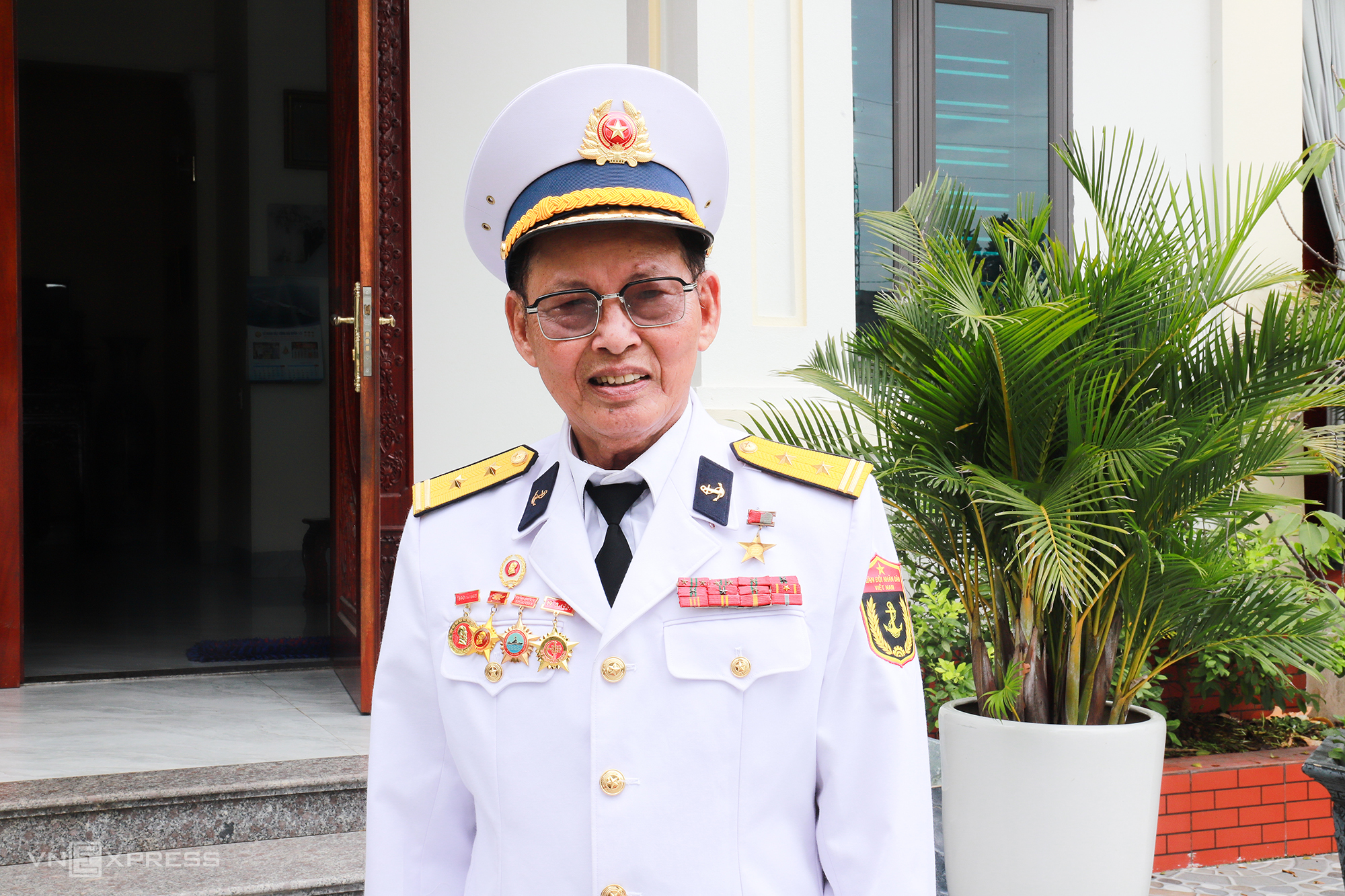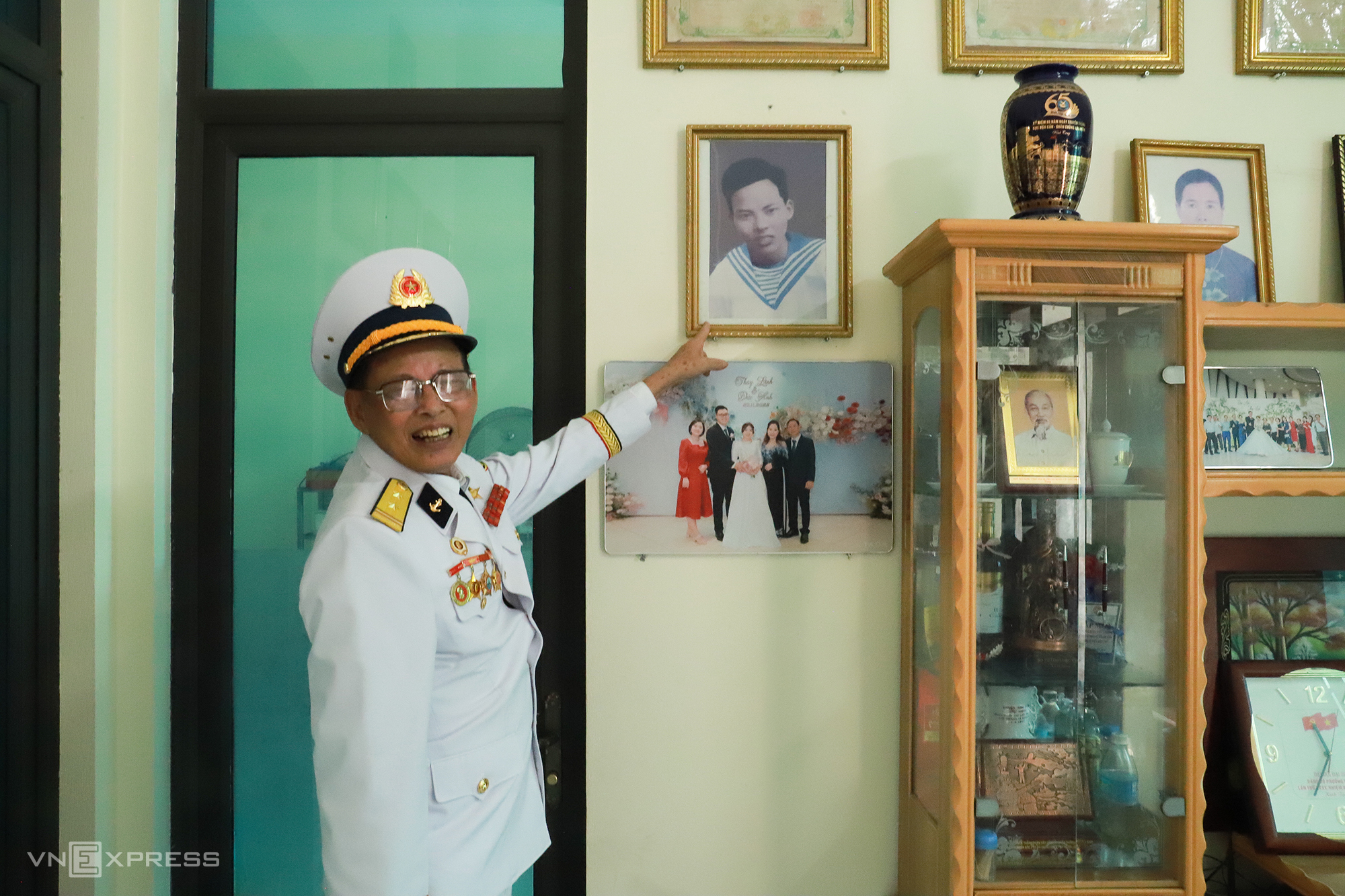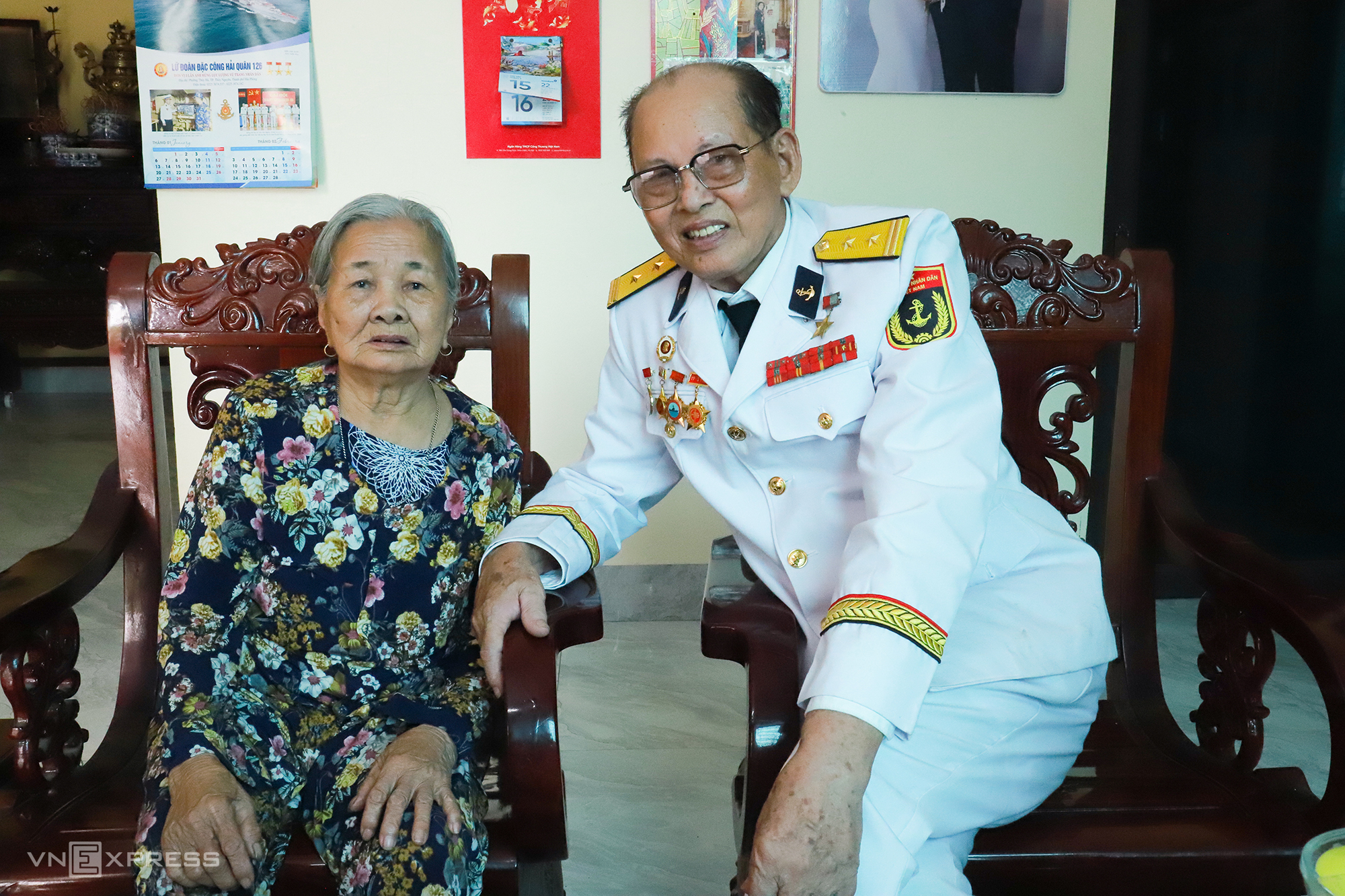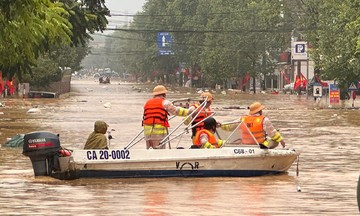"I reread it to 'meet' those who have passed away, to relive the battles at Cua Viet," Senh said.
In June 1965, 24-year-old Le Xuan Senh from Kinh Mon, Hai Duong (now Duy Tan ward, Hai Phong City) enlisted, leaving his wife to care for their two children and elderly mother.
He began as a combat engineer in the Northeast Military Zone, clearing mines and protecting transport routes in the sea and islands of Quang Ninh and Hai Phong. In 1966, after the Americans bombed the Cam Bridge (Dong Trieu, Quang Ninh), Private Second Class Le Xuan Senh and his unit participated in operations to clear naval mines, ensuring safe passage. For this initial success, he was awarded the third-class Combat Order.
 |
Lieutenant Colonel, Hero of the People's Armed Forces Le Xuan Senh at his home in Duy Tan ward, Hai Phong City, on the morning of 15/8. Photo: Nga Thanh
In August 1967, he was selected for the underwater special forces, joining Platoon 3, Company 2, Underwater Special Forces Group 126, Naval Command - one of the army's most elite units. The young soldier was sent for secret training at Hai Phong port to become a frogman.
In 1969, Senh was one of 10 outstanding individuals sent to the Quang Tri battlefield to fight at Cua Viet port.
At that time, Cua Viet was a "fiery coordinate," a strategic chokepoint. It was a vital military port where the US and their puppet regime received weapons, ammunition, and food supplies for the Quang Tri front and Route 9. North of the port was the McNamara electronic barrier, and on the shore was a dense network of bunkers and tanks. Underwater, warships patrolled day and night, constantly dropping grenades and sweeping for mines.
His mission, along with his comrades, was to penetrate this nearly impenetrable defense line to sink enemy transport ships.
Le Xuan Senh's first battle took place just after President Ho Chi Minh's death. The unit launched an emulation campaign to "turn grief into action." Their target was a 5,000-ton transport ship full of weapons reported to be anchored in the port.
Senh's combat team of seven, including six officers and Senh as the only soldier, secretly traveled 20 km through the jungle to reach the estuary. Each carried a dagger and grenades. Senh was tasked with carrying two 7 kg timed mines to destroy the ship.
"The enemy didn't make it easy for us. Aircraft constantly patrolled, and there were minefields, ambushes, and 'tropical trees' – alarm devices triggered by sound," Senh recounted.
The terrain along the Ben Hai River, all white sand with no cover, proved fatal for many frogmen. As they approached the target, the plan suddenly changed because the enemy ship moved. With little time left, the superiors ordered a retreat to preserve their forces. At that moment, the young soldier Le Xuan Senh suggested to Deputy Platoon Commander Le Van Tap: "It's been so hard to get here; it's a waste to withdraw now. Let's attack. If we don't make it in time, you go ahead, and I'll swim along the shore back later."
The young soldier's audacity convinced the commander. Two stayed behind. Senh and Tap tied themselves together for underwater communication, then slowly swam submerged, breathing only through reeds.
The port area was as bright as day due to floodlights. Patrol boats circled, occasionally dropping grenades to probe. More than 200 m from the target, Senh asked to go first.
"Suddenly, the sky went dark, and I realized the enemy had just thrown a grenade right next to us. The pressure made my ears ring, and I swallowed seawater," he said. But a stroke of luck intervened. The explosion inadvertently pushed them into the shadow of the 5,000-ton ship, where the lights didn't reach.
Reaching the target, Senh pulled the rope, signaling his comrade to remain on watch while he found the engine room. He scraped the barnacles off the hull with his dagger to ensure the mines adhered securely, then calmly removed the three safety pins (one anti-removal pin and two timing pins).
Mission accomplished, they turned back but encountered a strong current. Tap began to tire, and as he surfaced to breathe, the enemy spotted them. Gunfire erupted, and grenades exploded around them. They had to dive deep, using other ships as cover to escape. Nearly an hour later, they reached the rendezvous point.
As the team retreated about 2 km, two earth-shattering explosions rocked the area, sinking the 5,000-ton ship. The attack paralyzed Cua Viet port for seven days, cutting off a massive source of enemy weapons.
Lieutenant Colonel, Hero of the People's Armed Forces Le Xuan Senh recounts the night of 13/11/1969 when he and his comrades sank a 5,000-ton American warship. Video: Quynh Nga
A month after that daring raid, Le Xuan Senh was promoted directly to frogman platoon commander. With his combat experience and judgment, his comrades trusted him, giving him the nickname "Sharp Point, Victorious Wherever He Strikes."
From 1969 to 1972, the platoon under Senh's command sank 17 more enemy ships. Senh himself sank two heavy warships, ranging from a few hundred tons to 15,000 tons. Despite being the commander, he always participated in every field reconnaissance mission, finding safe waterways and studying enemy patterns to minimize casualties among his comrades.
For his exceptionally outstanding achievements, in 1972, Platoon Commander Le Xuan Senh was honored as a Hero of the People's Armed Forces at the age of 31. His military career was marked by five third-class Combat Orders, two second-class Combat Orders, six "Ship Destroyer" titles, and recognition as a "Determined to Win Soldier" in 1970 and 1971.
"Frogmen always considered themselves 'suicide squads.' Everyone kept a grenade ready. If discovered, it was better to sacrifice than be captured and reveal military secrets," the veteran said.
When asked about his most memorable experience from those fiery years, Senh pointed to a photograph of himself in a navy uniform, hastily taken during a brief visit home before returning to the battlefield.
"I gave the photo to my wife and told her if I returned alive, it would be a souvenir, but if I died, it would be my memorial photo," he said.
 |
Lieutenant Colonel Le Xuan Senh beside a souvenir photo taken hastily in Dong Trieu, Quang Ninh before 1969, as he prepared for his mission in Cua Viet, Quang Tri. Photo: Quynh Nguyen
The achievements of Senh and his comrades contributed to the heroic history of Brigade 126. From 1966 to 1973, at the Cua Viet - Dong Ha front, the Navy special forces fought nearly 300 battles, sinking and damaging over 300 vessels of various types, destroying tens of thousands of tons of enemy weapons and war materials, contributing significantly to the liberation of Quang Tri and the reunification of the country.
During Senh's years at war, his wife, 84-year-old Nguyen Thi Bac, was a steadfast pillar of support at home. Single-handedly managing the family, raising their two children, and caring for her mother-in-law, she never complained.
"I didn't know the specifics of my husband's duties. I just believed that he was fighting for independence, so I had to take care of everything at home so he could rest assured, hoping for our family's reunion in peace," Bac said.
 |
Lieutenant Colonel Le Xuan Senh and his wife, 84-year-old Nguyen Thi Bac, at their home in Duy Tan ward, Hai Phong City, on the morning of 15/8. Photo: Nga Thanh
After peace was restored, Lieutenant Colonel Le Xuan Senh attended further training and then held positions as Assistant to the Navy Personnel Department, Deputy Head of the Barracks Department, Logistics Department, Navy. He retired in May 1991, returning to a simple life of farming and fishing, making up for lost time with his wife.
When asked if he was ever afraid, the hero of Cua Viet acknowledged the thin line between life and death, but none of the soldiers of Brigade 126 thought about fear.
"We were not allowed to retreat because behind us were our homeland and families. The only way was to win and regain peace and independence," he said.
Nga Thanh - Quynh Nguyen












